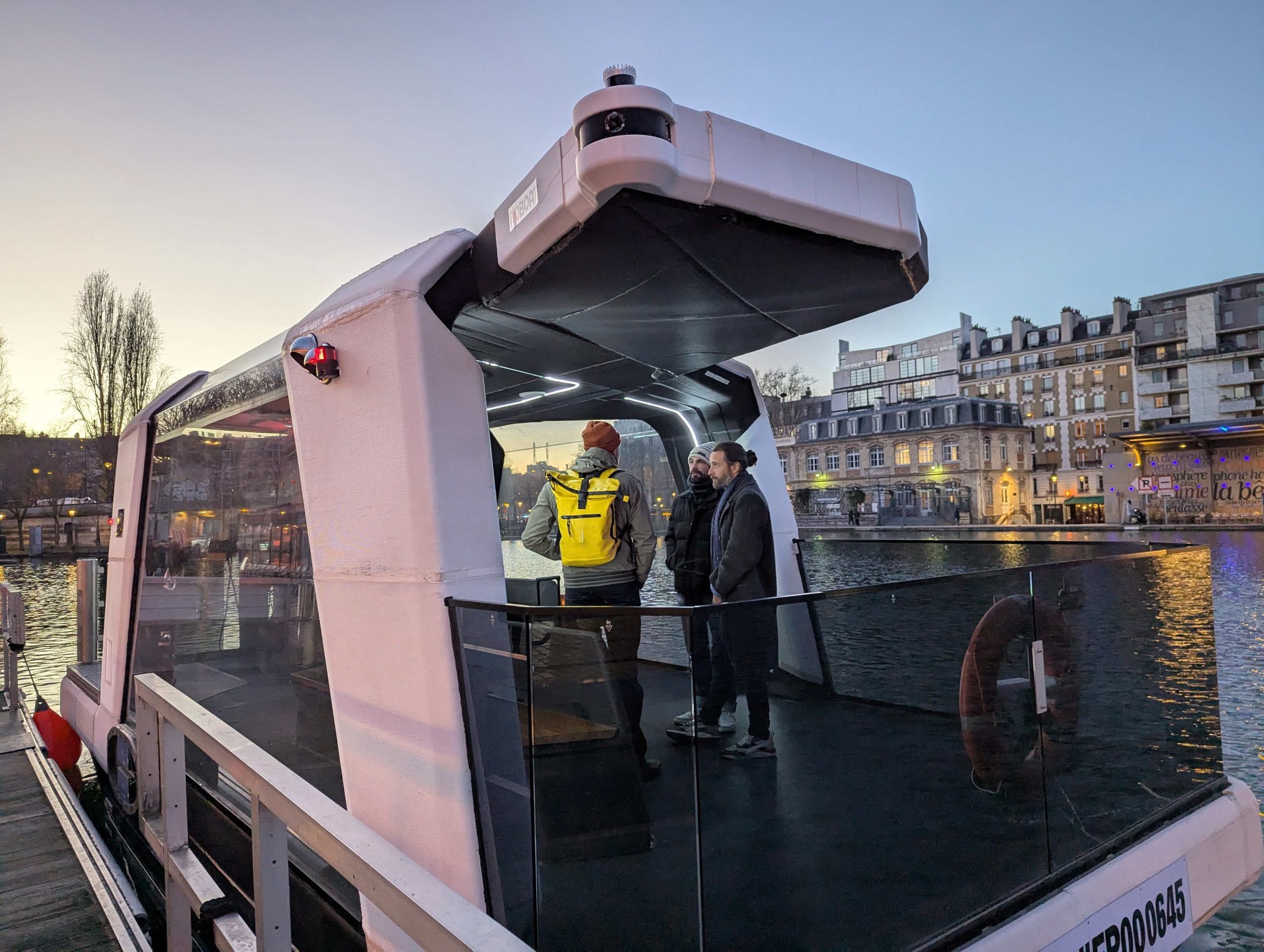Paris launches trial of Roboat ferry

Three months after its initial trial, Paris continues to push the boundaries of urban transportation with its pioneering autonomous ferry. This vessel, which first navigated the Bassin de la Villette from November 27 to December 3, is more than just a technological breakthrough—it serves as an innovation and demonstration platform for autonomous navigation. Developed by Dutch autonomy startup Roboat, in collaboration with Holland Shipyards Group and French operator Sequana Développement, the ferry is designed to assist the crew, reduce stress, and enhance operational safety in busy waterways while optimizing fuel consumption for more efficient operating expenses.
A key advantage of Roboat’s autonomous navigation technology is its adaptability—not only can it be integrated into newbuild vessels, but it can also be retrofitted onto existing boats, providing a flexible and scalable solution for operators looking to enhance their fleets without investing in entirely new ships. This groundbreaking project combines advanced 3D printing technology—led by 10XL—with cutting-edge electrical integration by Royal van der Leun, showcasing a new standard for sustainable and autonomous river transportation. Originally selected as the winner of Voies Navigables de France’s (VNF) call for autonomous boat demonstrators in December 2022, the consortium’s efforts have received recognition from Minister of Transport Clément Beaune following the JOP2024 Mobility Committee’s evaluation. Looking beyond the initial trial, this autonomous ferry will continue to navigate the canals of Paris, playing a crucial role in facilitating waterborne mobility.
Ferry lines are ideal candidates for adopting autonomous navigation, as the routes are often fixed. This allows for setting up the automation under known conditions. Roboat specializes in creating autonomy systems capable of operating in these conditions.
? “Our autonomous ferry is a transformative step towards smarter urban transportation,” said Ynse Deinema, CEO of Roboat. “By leveraging cutting-edge autonomous technology, we are addressing the current challenges of waterway operations. This project demonstrates how technology can seamlessly integrate with urban infrastructure.”
Its construction via 3D printing not only showcases cutting-edge manufacturing techniques but also promotes local production and environmental responsibility, with materials being recyclable up to five times. Powered entirely by battery, it underscores Paris’s commitment to sustainability and reducing carbon emissions.
? “The launch of our autonomous ferry trial is a testament to the collaborative spirit and technical prowess of our consortium,” said Leendert Hoogendoorn, Director of Holland Shipyards Group. “By integrating electric propulsion and 3D printing, we are not only advancing sustainable transport but also demonstrating how innovative manufacturing can meet the demands of modern shipbuilding.”
During the trial week, the ferry will operate autonomously across the Bassin de la Villette, with a safety officer on board to oversee operations and assist passengers as needed. This trial not only aims to validate the vessel’s autonomous capabilities but also to gather valuable data to refine and enhance the system for broader implementation. The trial is expected to pave the way for expanded use of autonomous ferries on Paris’s waterways, contributing to the city’s vision of a smart, green, and interconnected urban landscape. By embracing automation and sustainable practices, Paris is setting a precedent for cities worldwide to follow in revolutionizing their water-based transportation networks.
“Tony” autonomous ferry specifications:
? Designer – Roboat
? Builder – Holland Shipyards Group
? LOA – 9 m
? Width – 3.9 m
? Draft – 0.9 m
? Power system – electric
? Propulsion – 2 x bow thrusters, 2 x main thrusters
?? Source: Roboat
See also related
Countries
Companies
Applications
Ship Types
Recent updates
ROC + DOCK project demonstrates future of resident USV operations
Research project to teach MASS operate with critical navigation data
ORLEN acquires Exail Drix H-8 USV
TideWise launches two new USVs
Zeabuz launches Dual-Use Autonomy Platform on Damen's ZeaFalcon
BlackSea Technologies introduces Modular Attack Surface Craft USV Family
